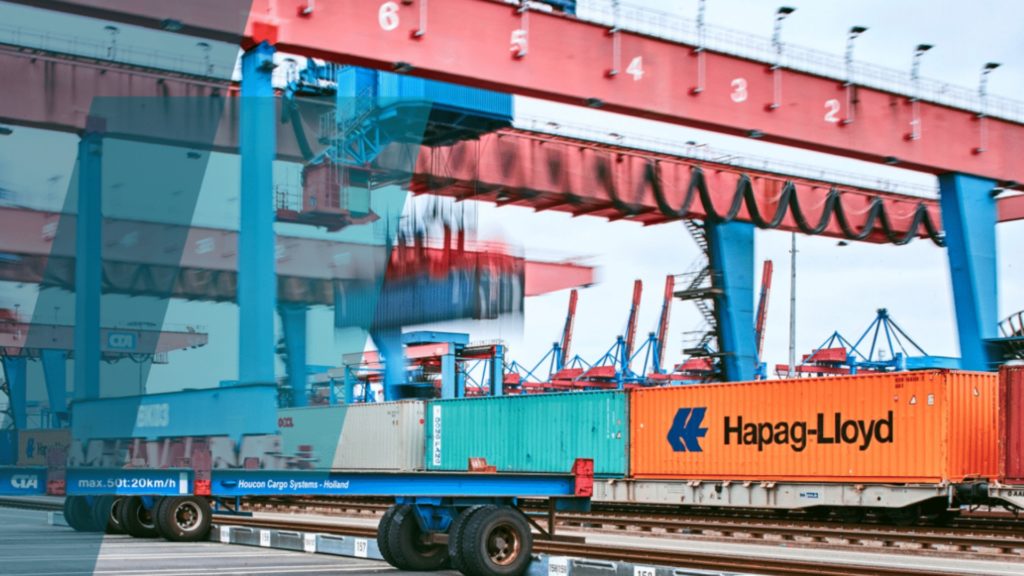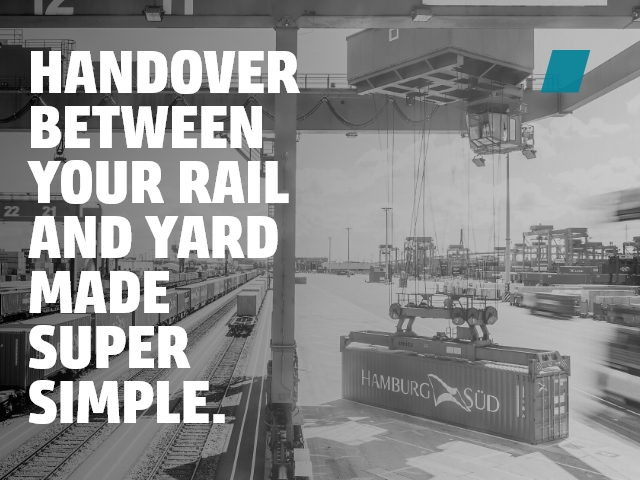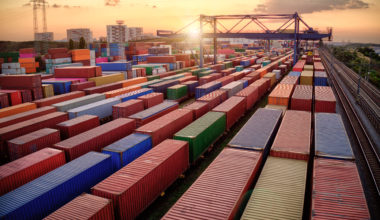For container terminals, running out of space is a good problem to have, but a problem nonetheless. HHLA Container Terminal Altenwerder (CTA) was built to handle approximately 790,000 TEU on its rail terminal. In 2013, CTA had already handled 813,000 TEU, making the facility the largest of its kind in Europe. Increasing capacity was only the beginning of the rail terminal’s challenge; they also had to consider additional constraints. In short, CTA’s rail terminal upgrade project was a great success, and INFORM’s optimization system and services delivered value well beyond what CTA expected.
Table of Contents
Expansion Challenges
For container terminals, running out of space is a good problem to have, but a problem nonetheless. HHLA Container Terminal Altenwerder (CTA) was built to handle approximately 790,000 TEU on its rail terminal. In 2013, CTA had already handled 813,000 TEU, making the facility the largest of its kind in Europe. While this is a testament to its highly optimized nature, it was also a sign that it would need to expand. With sustained growth of nearly 20% in volume since 2010, the CTA rail terminal was quickly running out of space, and they knew they had to increase capacity.
Increasing capacity was only the beginning of the rail terminal’s challenge; they also had to consider additional constraints. First, they had to figure out how to expand rail capacity within the terminal’s existing footprint – no new land was available to them. Second, the terminal had to remain operational throughout any upgrade project – it wasn’t possible to temporarily close the facility. Finally, they needed to deliver the project without impacting the high-quality customer service their clients had come to expect.

Challenges
For container terminals, running out of space is a good problem to have, but a problem nonetheless. Increasing capacity was only the beginning of the rail terminal’s challenge; they also had to consider additional constraints.
Finding Solutions
With their issues on the table, CTA set to work finding solutions. They established that they could add two additional tracks within their current terminal footprint. This would allow them to use their existing land more efficiently. But, in solving this problem, they created another – adding two new tracks would require them to change the way they checked container data.
Previously, small “checkmobiles” would drive the length of the trains between the tracks. Without the required space, a new solution would be necessary. CTA devised a digital “train gate” solution that would record container data automatically as a train entered the terminal, eliminating the need for the “checkmobiles” while simultaneously improving terminal performance by allowing train-handling operations to commence promptly on train arrival.
With the first issue resolved, CTA could focus on how to deliver the project while keeping the terminal operational. Central to this, CTA wanted to avoid compromising on customer service standards. “We had concerns that the expansion project would negatively impact the excellent service that our customers had come to expect from CTA,” commented Ingo Witte, Managing Director, CTA. To achieve this, they had to maintain a high throughput and reliable turnaround times with minimal impact to their clients while operating at reduced physical capacity throughout the rail terminal upgrade project. This would be no small feat for any terminal.
INFORM Delivers Value beyond Code
In early 2015, CTA approached INFORM with its customer service concerns. INFORM set to work devising a plan. They started by running simulations to see how the terminal would perform under the different construction scenarios that were required to add the two additional tracks. Working with INFORM’s latest version of its Syncrotess Rail Crane Optimizer, they were able to model the data and show that even with substantial track closures, CTA could remain operational with minimal disruption to their customers.
Dr. Eva Savelsberg, Senior Vice President of the Logistics Division at INFORM, commented, “The project presented multiple unique construction scenarios that challenged INFORM’s team and software, but the simulations showed CTA would be able to remain operational with good customer service levels.”
Laying the Groundwork
In December 2015, with a plan in place and CTA’s confidence in the project high, they approved the upgrade of their existing Rail Crane Optimizer to the latest-generation solution. The new solution would be delivered pre-configured with the current terminal layout, planned construction scenarios, and the final terminal design to enable timely transitions throughout the rail terminal upgrade project.
“A significant advantage to INFORM’s Syncrotess Optimization Modules is that they are add-ons to a terminal’s core TOS,” added Dr. Savelsberg. This “add-on” capability allows them to be deployed very quickly and with minimal peripheral system implications. By working in conjunction with CTA’s core TOS, INFORM was able to deliver the enhanced Rail Crane Optimization quickly. The “add-on” relationship allowed CTA to upgrade easily without significant changes in how operators interacted with terminal systems.
Like most of INFORM’s Optimization Modules, the Rail Crane Optimizer works in the background without direct user interaction. CTA’s staff interact with their existing, familiar software environment while benefiting from optimization. For CTA, this meant there was no timely retraining required and no process changes needed. The enhanced system went live in April 2016, a few short months after CTA’s approval to proceed.

Supporting CTA through Construction
With the newly upgraded Rail Crane Optimizer running smoothly, CTA commenced its rail terminal upgrade project. The construction plan was segmented into two phases, each with a unique construction scenario. The phasing of the project brought its own challenges to overcome.
This reconfiguration had to be conducted between phases. As building work could not commence until the reconfiguration was completed successfully, INFORM had the very real potential to set CTA’s project behind schedule and over budget.
“As a starting point, the simulation helped INFORM to understand what optimization parameters would work well for each of CTA’s construction scenarios. These were pre-configured as part of the Rail Crane Optimizer upgrade. However, a degree of calibration was required before commencing each phase. Normally, the calibration process is completed over a two- or three-month period. During the CTA project, we completed it in a matter of days to allow construction to continue on schedule,” commented Dr. Ingo Marko, Senior Consultant in the Logistics Division and CTA Project Manager at INFORM.
Solution
CTA approached INFORM with its customer service concerns. INFORM set to work devising a plan. They started by running simulations to see how the terminal would perform under the different construction scenarios that were required to add the two additional tracks. Working with INFORM’s latest version of its Syncrotess Rail Crane Optimizer, they were able to model the data and show that even with substantial track closures, CTA could remain operational with minimal disruption to their customers.
Phase one presented CTA with the upgrade project’s most complicated construction scenario. It included the closure of three of the existing seven tracks, reducing the site’s capacity by 42%. To complicate things further, CTA’s rail cranes were not allowed to move load units over the construction zone, which was in the middle of the available rail tracks.

SYNCROTESS
Add-on Module

Rail Scheduler improves the utilization of transfer points between your rail and yard while increasing rail crane and yard vehicle productivity.
“Syncrotess was able to adapt readily to the changing construction scenarios. As a first for the optimization software, INFORM created ‘virtual construction fences’ in the system’s configuration that enabled the Rail Crane Optimizer to adhere to the constraints of the construction scenarios while managing the workload efficiently,” added Dr. Savelsberg.
As with phase one, phase two saw significant reductions in the number of trail tracks open. Phase two made five tracks available. For safety and operational reasons, only four of these tracks were used. Furthermore, as with phase one, no load units were permitted to move over the construction zone.
“All load units were required to be trucked to the west side of the rail tracks. This was facilitated by a combined effort of INFORM’s Vehicle Optimizer and Rail Crane Optimizer,” added Dr. Marko. The Optimization Software was able to manage the workload effectively, maintaining CTA’s high customer satisfaction levels throughout the project.


